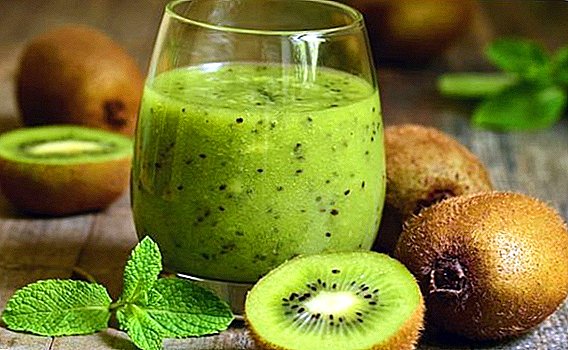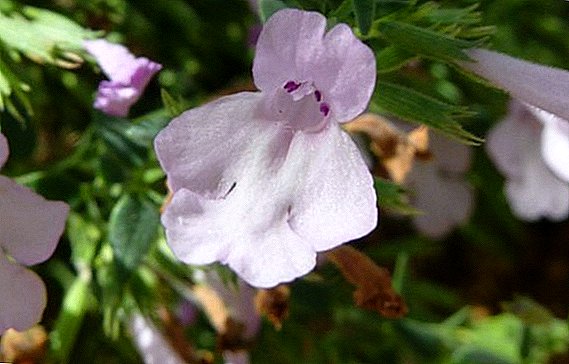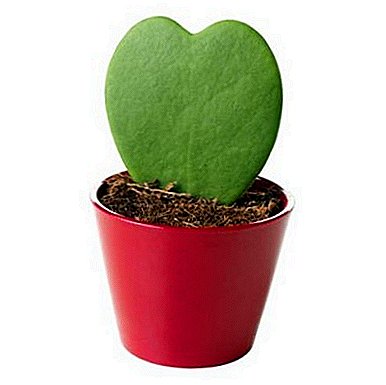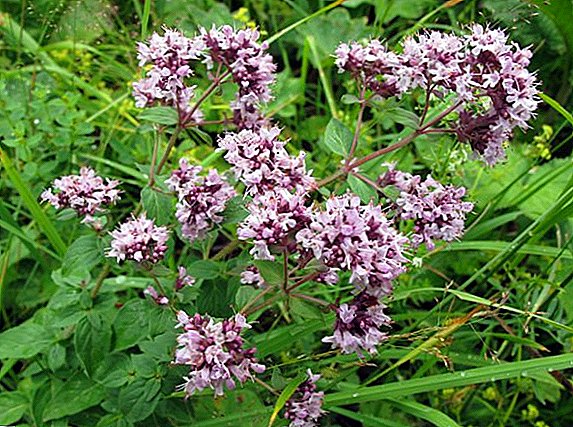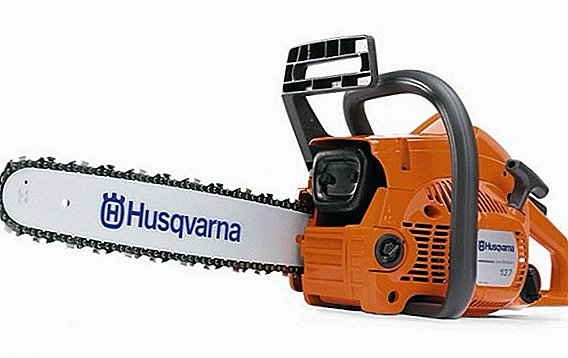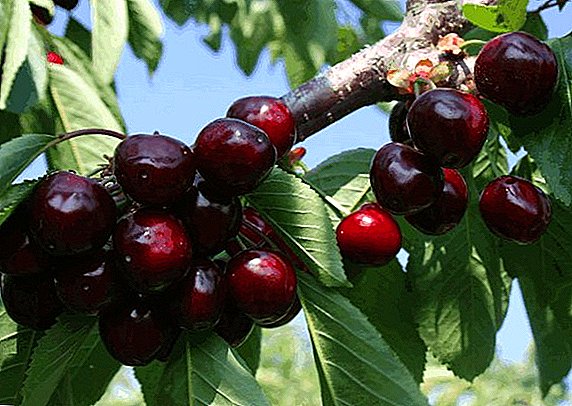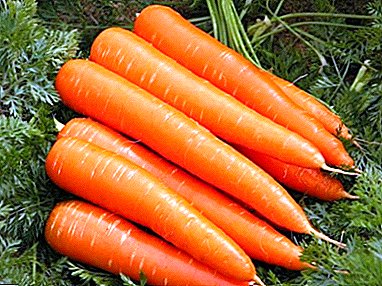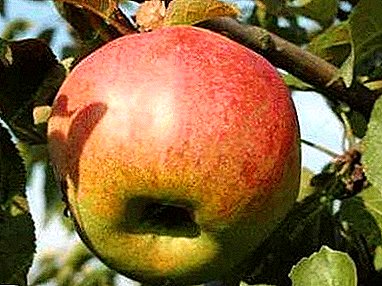
Apple variety Youth has a huge number of advantages.
The main advantage is the high yield of the variety, as well as high consumer qualities of the fruit.
An additional plus is that the variety is not whimsical to the soil.
What kind is it?
Apple tree varieties Youth applies to early winter species. It is characterized by high yield, winter hardiness and drought resistance.
The safety of the fruit on average up to three months, however, depends on the proper storage of apples:
- required optimal temperature - 0 ° C;
- relative humidity of air - 90-95%;
- storage in wooden boxes or containers;
- fruit size calibration;
- sorting apples by grade.
Winter varieties also include: Nastya, Nymph, Aport, In Memory of a Warrior and Orlik.
Pollination
 Pollination occurs due to the pollen of apple flowers of a self-fertile variety, since the apple tree belongs to the self-fruitless type.
Pollination occurs due to the pollen of apple flowers of a self-fertile variety, since the apple tree belongs to the self-fruitless type.
Ideally plant two types of lanes at a distance of five meters from one another.
The best grades for pollination:
- Snow Calvil;
- Miltosh;
- Joanared;
- Pepinka;
- Autumn striped.
Appearance
The appearance of an apple tree is characterized by an average tree height, a dense crown of rich color and light green, large fruits.
Fast growing, sredneroslye. Crohn rounded thick. The color of the branches is gray. The branches are dense, long, moving away from the trunk at a large angle. Fruiting on kolchatka and spears.
Fruit bags elongated, large sizes. The shoots are well pubescent, large, have a brown color. A large, oval-shaped leaf with a short, tapered end.
The shoots are brown, curved, large in thickness. Chechevichki average in size. The leaf plate is large, symmetrical, wrinkled and moderately pubescent.
The buds are red-pink color. The flowers are white with pink splashes.
Ribbed, heavy, rather large sizes. The color of the apple is light green, smoothly turning into a pale red cover shade.
The skin is smooth with a slight waxy coating. On the surface, clearly visible subcutaneous points of large size.
 The flesh is white with a yellowish tinge, juicy with a light aroma.
The flesh is white with a yellowish tinge, juicy with a light aroma.
Taste sweet, sweet and sour. The flavors of Aromatny, Dessert Petrov, Ural Bulk, Silver Hoof and Pepin Saffron have the same taste.
Sort characterized by a rich chemical composition of the fruit:
- dry matter - up to 20%;
- sugar - 13%;
- titrated to-you - 0.5%;
- ascorbic acid - 11 mg per 100 g;
- the ratio of sugar to acid is about 30;
- P-active substances: flavonols - 20 mg per 100 g, catechins - 127 mg per 100 g;
- the amount of phenolic compounds is 260 mg per 100 g (121-340);
- pectin substances - 0.42%;
- vitamin C - 40 mg;
- vitamins B1, B2, A, PP.
A photo
Several photos of the apple tree variety “Youth” can be seen below:


A variety of apple trees Molodezhnoye was obtained in the Volgograd Research Institute of Plant Industry named. N.I. Vavilova by hybridization Zhiguli and Boyken.
Breeders varieties: Malychenko V.V., Balandina L.N.
Apple variety Youth has a second name, derived from the name of one of the authors - Malychenkovskoe.
Growing region
The zone of natural growth of the apple variety Youth is Lower Volga region of Russia.
With proper planting and care, the variety gets acclimatiously in other regions, but the most promising for it are sunny territories, for example, the southern regions of Ukraine.
Yield
In the fruiting tree varieties Youth enters the 4-5 year after planting. The variety is characterized by high yield and good transportability of fruits.
Harvest starts in early September. Apples are not showered during ripening. Harvesting is a regular, annual, average of 150 quintals per hectare.
Excellent yields are demonstrated by the following varieties: Winter Pear, Melby's Daughter, Antey, Winter Beauty and Autumn Low.
Landing
 The yield and the size of the fruit of the apple tree variety Youth. When planting a tree using classic fertilizer.
The yield and the size of the fruit of the apple tree variety Youth. When planting a tree using classic fertilizer.
Caring for an apple tree does not require much effort, since the variety is absolutely not whimsical to the soil.
For a tree to grow strong, healthy and beautiful, the first thing you need is choose the right seedling:
- purchase seedlings with a developed root system and purchase them in a zone with the same climatic conditions;
- choose a young seedling, then it adapts more quickly to the soil on the plot where it is grown;
After purchasing seedlings is very important to choose place to plant an apple tree:
- sunny territory;
- lack of wind;
- areas for planting should be well drained;
- to make the tree grow strong and bring maximum yield, it is recommended to use loamy soil;
- avoid places where groundwater is located close to the surface;
- properly prepare the landing hole.
Apple trees of this variety are planted, as a rule, in two seasons:
- autumn (late September - early October);
- spring (late April).
The most important point in the landing process is the preparation of landing holes. The optimal parameters of the pit for planting an apple: 1x1x0.7m.
The upper layer of the excavated earth is mixed with the lower layer and the following fertilizers are introduced:
- 18–20 kg of horse manure;
- 250 grams of wood ash;
- 250 g of superphosphate;
- 100 grams of potassium sulfate.
The pit is filled with a mixture of earth with fertilizer for 2/3. From above they pour fertile soil without fertilizers. Pit watered and again fill the layer of fertile soil.
Now you can carefully plant an apple tree. After sure we tie it to a wooden peg.
Care
At first, the apple tree Youth variety practically does not need to be cared for. In the spring, the second year after planting, it is important to form a deciduous crown of an apple tree.
It is necessary to trim the ends of each branch. The first two years it is important that the apple tree was tied to a wooden peg (it is better to use a linden or hazel tree).
It is desirable for the first four to five years not to give the apple fruit to form (it is necessary to pick 80-100% of the flowers).
Basic care during the first five years after landing:
- tying trees to protect against rodents and hares (material - parchment, lapnik);
- mulching with humus pristvolnyh circles;
- hilling the ground to a height of twenty centimeters;
- irrigation of trees with mixtures that protect against pests.
Diseases and pests
Trees varieties Molodezhnoye are characterized by high resistance to various fungal diseases. The best method of treating apple for fungal diseases is prevention.
A number of comprehensive measures that bring a preventive effect against various diseases of the apple tree:
 pollination of colloidal sulfur and copper compounds;
pollination of colloidal sulfur and copper compounds;- the use of varieties with high resistance to the disease;
- destruction of the affected elements;
- fertilization of potash and phosphorus type;
- soil ash;
- crown formation;
- feed with potash fertilizers;
- Calcium chloride spraying during the growing season;
- timely harvest;
- proper storage of apples.
Compliance with at least half of the above positions will save your tree from diseases such as scab, powdery mildew (the Youth variety is most often exposed to this disease), fruit rot, bacterial burn and many others.
Briefly consider the signs and causes of some of them.
Scab
First of all it infects the leaves of the tree, and then moves to the fruit. The reason for the appearance of this fungus is most often the stagnation of air inside the crown of a tree or increased humidity.
The first signs of scab are the appearance of green-brown spots on the leaves, also in a large number of small brown, forming a crust, spots on the fruit.
Fruit Rot
Disease of the fungal type, which penetrates into the middle of the fetus through cracks and wounds created earlier by animals, hail or any other way.
The first sign is the appearance of a brown spot on the skin of the apple, which will grow until the apple is completely rotten.
Burn
Called by the bacterium Erwinia amylovora. The infected trees cannot be cured, unfortunately. They need to be destroyed as soon as possible so that they do not infect nearby growing varieties.
The causative agent is a quarantine object.>
Mealy dew
 Fungal disease. A characteristic sign of the disease is the appearance of the mycelium fungus in the form of white bloom on the leaves of trees.
Fungal disease. A characteristic sign of the disease is the appearance of the mycelium fungus in the form of white bloom on the leaves of trees.
Most often the disease manifests itself after heavy rains. Infection occurs on the tree from the bottom up, until it completely attacks the tree.
Do not forget that pests can threaten the apple trees. It is necessary to take adequate preventive measures against the codling moth, the mining moth, haws, silkworms and fruit sapwood.
The fruits of apples of the Molodezhnoye variety have a high biological value and have excellent organoleptic properties. They are indispensable in the manufacture of jam, juice, stewed fruit and baking of various types. In the fresh form to taste they have virtually no equal.


 pollination of colloidal sulfur and copper compounds;
pollination of colloidal sulfur and copper compounds;